
Learn the Chords in D Minor: A Music Theory Guide
Learn about D Minor chords, and explore their role in music theory, and how to use them in your own compositions. Perfect guide for beginners and musicians.
Introduction
Understanding chords and how they work together in a key is your secret weapon to unlock interesting and engaging chord progressions in your music. In this guide, we'll look at the D minor key signature, showing you how to build compelling chord progressions that move your listeners.
We’ll start with the basics of the D natural minor scale, then dive into the triads and seventh chords that give D minor its unique sound. Finally, we'll explore some exciting non-diatonic chords to add real depth to your music.
With the use of practical examples, you’ll gain knowledge on how to instantly apply these theoretical concepts in songwriting and production.
The Basics of the D Minor Scale
To build chords in D minor, we start with its foundation: the D natural minor scale. The D minor scale consists of D, E, F, G, A, Bb, and C, arranged in a specific pattern of whole and half steps: W-H-W-W-H-W-W.

This pattern of whole and half steps is the same as what’s called the Aeolian mode. While we usually refer to it as the natural minor scale, they're the same thing. For a detailed explanation of musical modes, Charles Cornell's video is highly recommended.
Each note in this scale has a role, called a scale degree, defined by its distance from the tonic, D. These degrees and their Roman numeral names are crucial for understanding how chords function in D minor. These symbols help us map out chord progressions.
- D - Tonic (1st degree) - i
- E - Supertonic (2nd degree) - ii°
- F - Mediant (3rd degree) - III
- G - Subdominant (4th degree) - iv
- A - Dominant (5th degree) - v / V
- Bb - Submediant (6th degree) - VI
- C - Subtonic (7th degree) - VII
For further exploration of music theory concepts, including comprehensive tutorials covering all key signatures, please refer to our blog.
Harmonic Minor and Melodic Minor
Now, D minor offers more than just the natural minor. We can alter it to create the harmonic and melodic minor scales, adding unique flavors. The harmonic minor raises the seventh note, C, to C#, creating a “leading tone” that pulls strongly towards D, making resolutions more powerful.
This C# is often used to form a major V chord (A major), even within natural minor progressions, for that classic V-i resolution.
Harmonic Minor

The melodic minor is different. Ascending, it raises both the sixth and seventh notes (Bb and C) to B and C#, making melodies smoother. Descending, it reverts to the natural minor.
Melodic Minor (Ascending)

These two variations expand D minor's expressive range.
D minor Chords and Their Functions in Music
Chords are built on intervals of thirds (either major or minor thirds). The most fundamental chord structure, the triad, consists of three pitches arranged in stacked thirds:
- Root: This is the base note, the foundation upon which the chord is built, and it gives the chord its name.
- Third: This interval defines the chord's quality, whether it's major or minor. A minor third above the root results in a minor chord. A major third above the root makes a major chord.
- Fifth: This interval adds harmonic depth and stability to the chord. The fifth can be augmented (raised) or diminished (lowered) by a half step.
From the D minor scale, we get seven diatonic chords: Dm, Edim, Fmaj, Gm, Am, Bbmaj, and Cmaj.
These chords aren't just random; they create harmony and movement. Understanding how they're built and how they function is key to writing compelling progressions in D minor. We'll look at each chord, how it's constructed, and how it's used in real musical examples.

Let's explore these D minor chords in action, focusing on how they're commonly used in progressions. The piano is a great tool for visualizing these chords, showing us how they're built and how alterations, like those used in augmented chords, change their sound. By seeing the chords on the keys, we can better understand their function and how they create movement and emotion in music.
i: D Minor
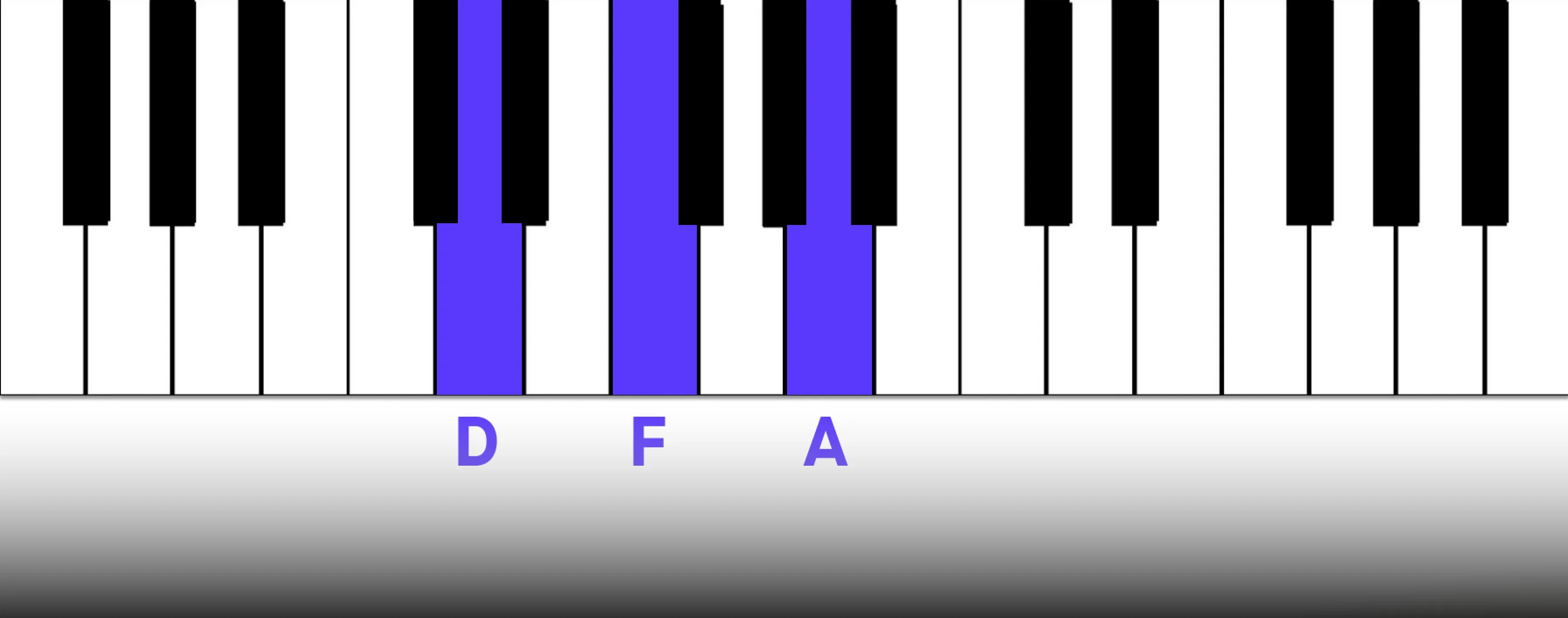
The D minor chord, serving as the tonic, is the harmonic anchor of the key. It establishes a sense of stability and resolution, acting as the gravitational center to which all other chords within the key gravitate. The tonic chord is the defining harmonic element, establishing the foundational framework for all subsequent harmonic relationships.
It functions as the point of reference for both harmonic tension and release while providing context for all harmonic events within the key. Chord progressions routinely utilize the tonic chord to establish and reinforce the tonal center, frequently employing it at the beginning and end of musical phrases or sections, thereby creating a sense of harmonic closure.
Example: Fall Out Boy's “My Songs Know What You Did In The Dark” uses a verse with alternating minor tonic and major subdominant chords, establishing the key through repetition. This harmonic simplicity magnifies the impact of a later, more colorful progression and richer instrumentation, creating a powerful release.
ii°: E Diminished
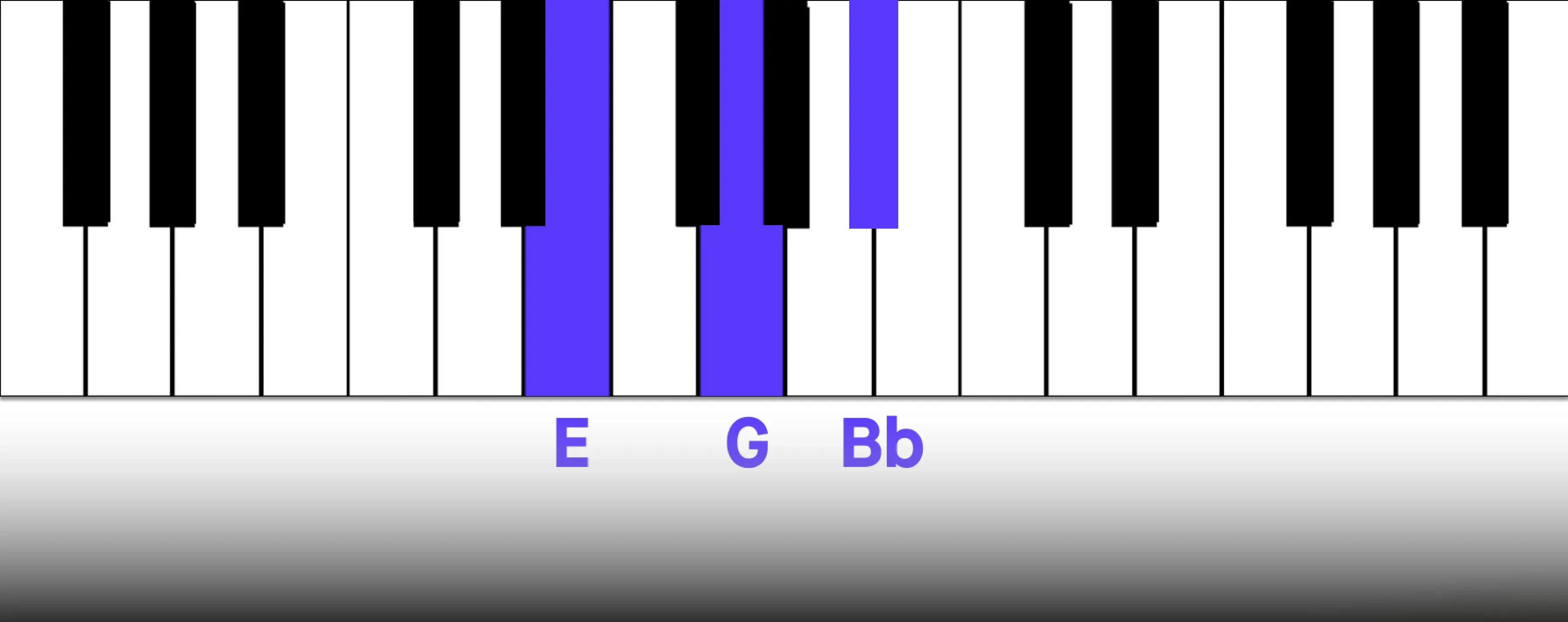
The diminished chord, with its inherent instability, provides a vital source of harmonic tension and color. With a supertonic chord function, its primary function is to serve as a pivotal bridge, facilitating smooth transitions to either the dominant or the tonic.
This dual role allows for nuanced expressive possibilities. When resolving to the tonic, it offers a gentle yet poignant return after harmonic exploration. Its unique blend of minor and diminished qualities adds a distinctive, rich color, moving the harmonic narrative forward with dramatic flair.
III: F Major
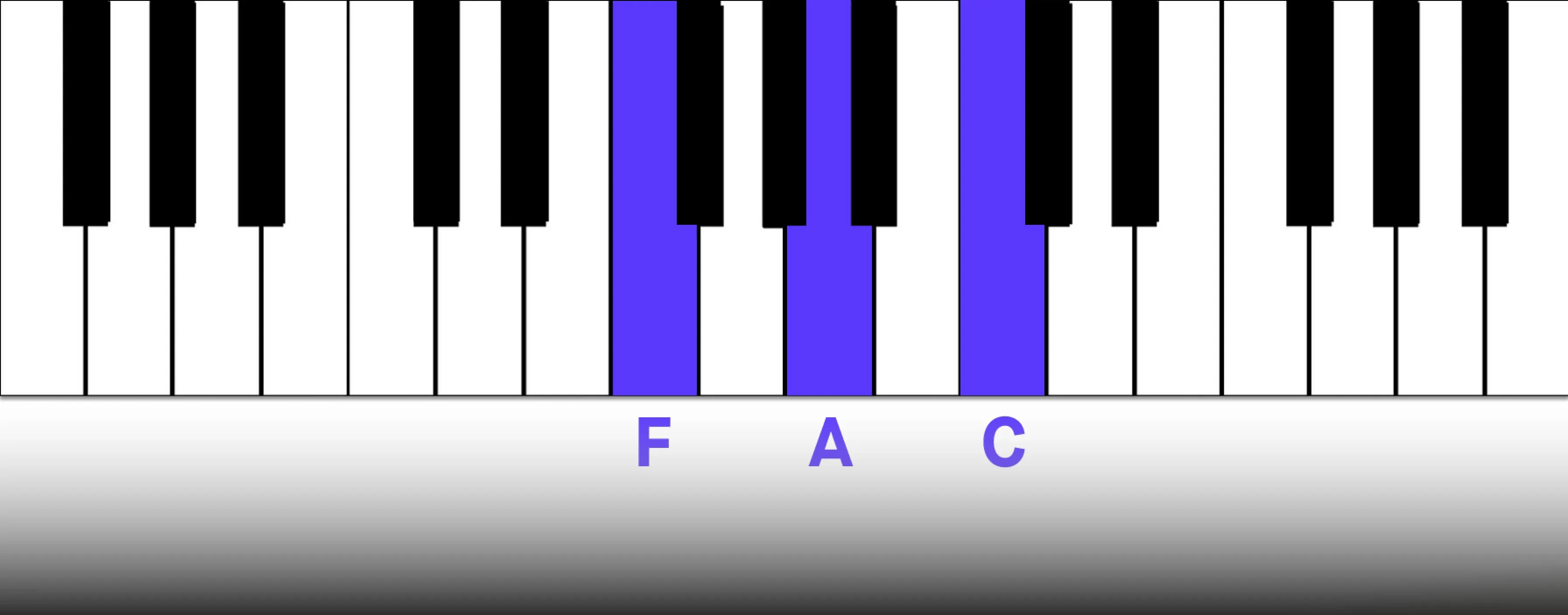
The A major mediant chord introduces a distinct and contrasting color to the D minor tonality. In contrast to the sharp dissonance inherent in the diminished supertonic, the mediant offers a more nuanced harmonic tension, suggesting resolution while often leading to unexpected harmonic trajectories.
This chord functions as a versatile harmonic element, serving as a passing chord, creating contrast with primary minor chords, and acting as a tonic substitute. Its shared notes with the tonic chord allow for a sense of resolution without the definitive closure of the tonic, facilitating smoother and more harmonically ambiguous progressions.
Example: In the chorus of “Get Another Boyfriend”, the Backstreet Boys utilize a powerful major III chord functioning as a tonic substitute. The III-VII progression mimics a I-V relationship in F major, creating a harmonic illusion of modulation which makes an engaging listening experience.
iv: G Minor
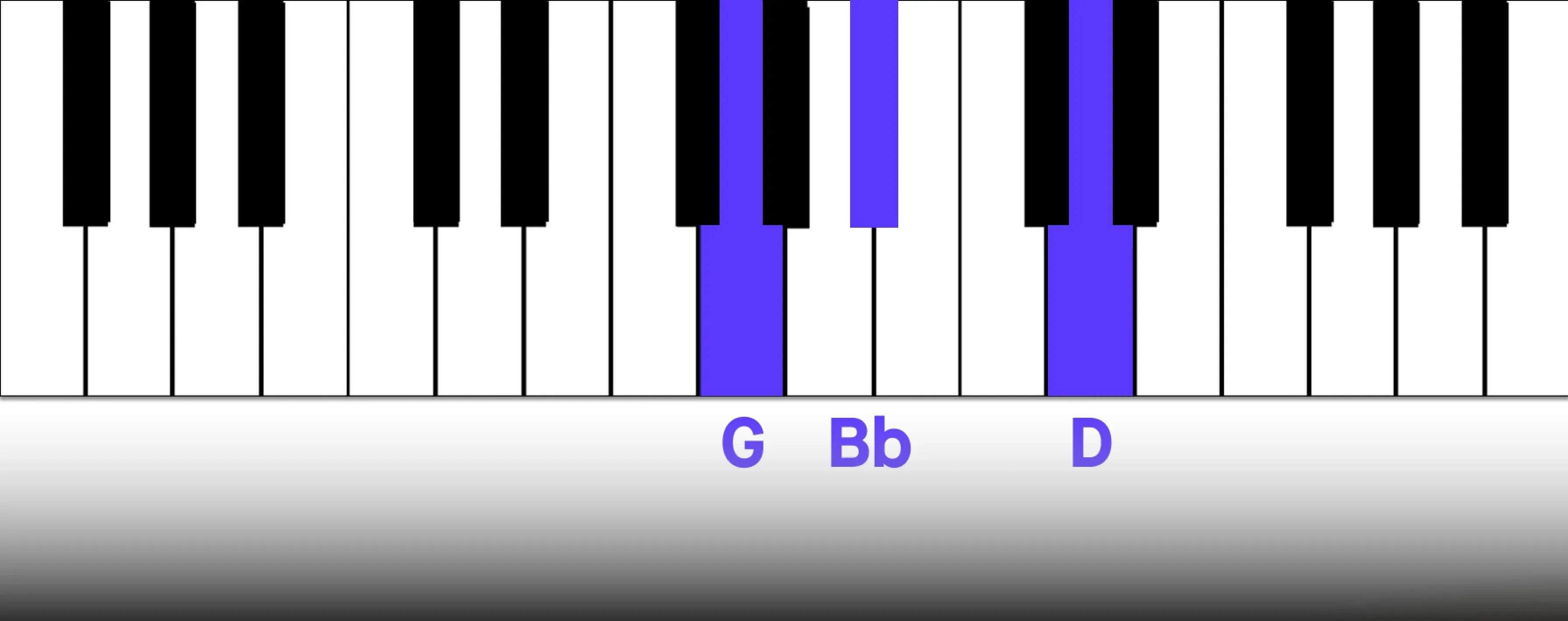
The subdominant chord, Bb major, plays a significant role in establishing harmonic motion and providing contrast within the key of D minor. It offers a gentle departure from the tonic, creating a temporary point of harmonic interest.
In contrast to the dominant's strong tendency towards resolution, the subdominant generates a more subtle sense of anticipation and forward momentum. Its characteristic progression towards the dominant chord, which then typically resolves to the tonic, represents a fundamental principle of tonal harmony.
Beyond its function within the basic i-iv-V-i progression, the subdominant enriches the harmonic landscape, introducing color and depth. It contributes to a sense of harmonic “departure and return”, thereby enhancing the overall musical experience.
Example: Jay-Z and Justin Timberlake's “Holy Grail” effectively showcases the minor iv chord's role in creating harmonic departure. The chorus begins on the tonic, firmly establishing the key. It then progresses to the major VI chord, providing forward motion while remaining harmonically linked to the tonic through shared tones. The subsequent G minor, the iv chord, introduces a distinct shift, generating a sense of anticipation and a desire for resolution.
v/V: A Minor /A Major
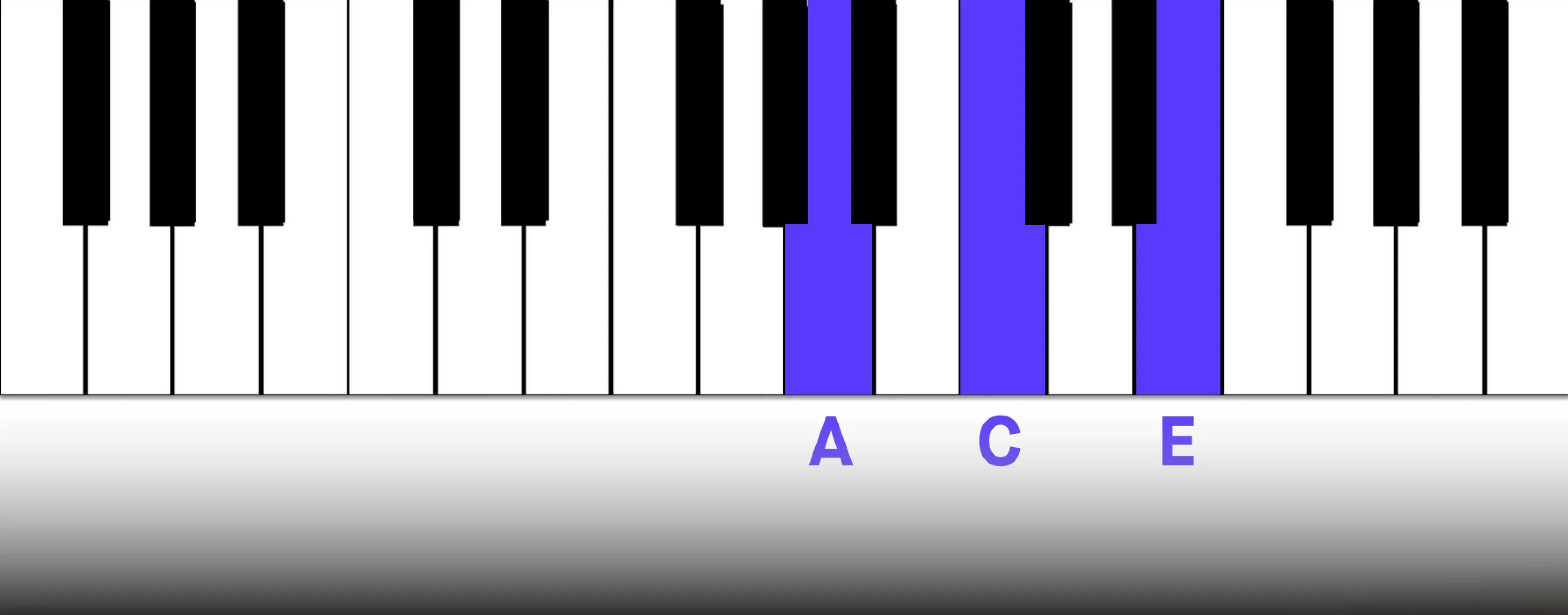
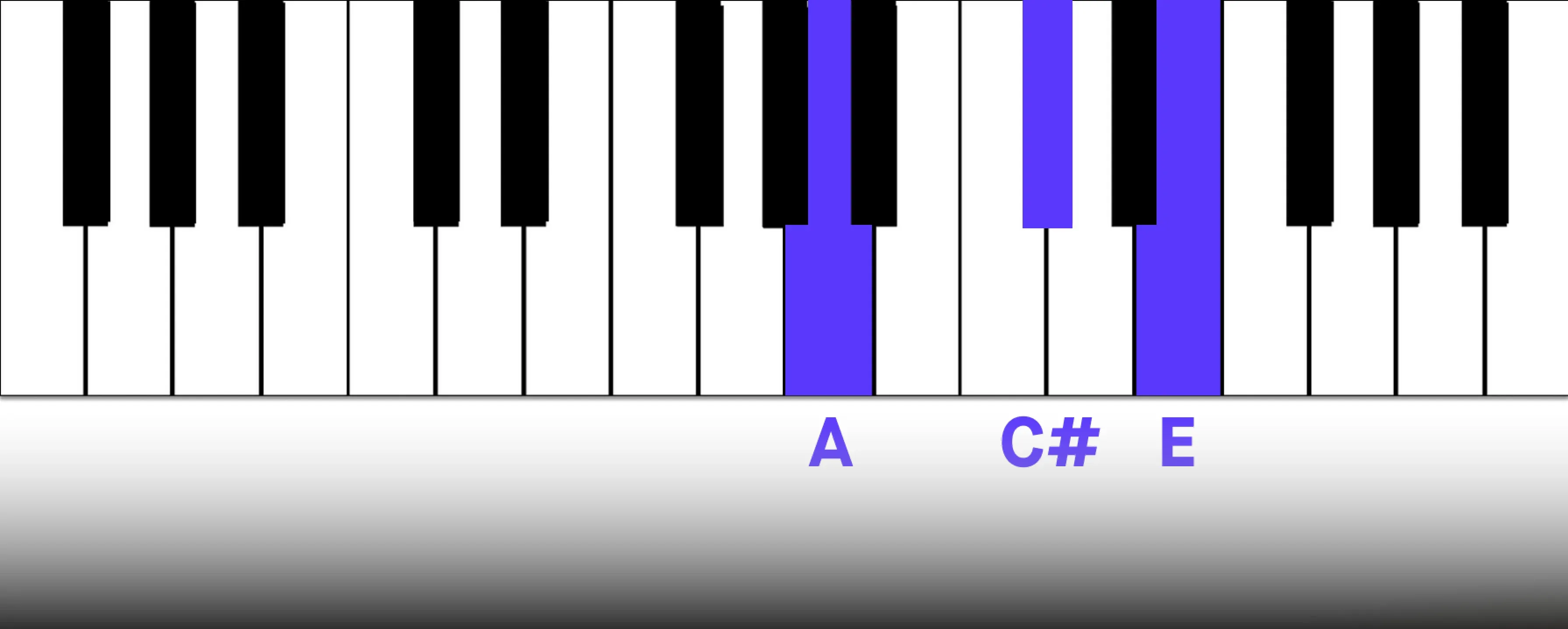
While the diatonic dominant chord in a minor key is typically minor, it is common harmonic practice to raise the seventh scale degree, resulting in a major dominant chord.
The A major (or A7) chord, functioning as the dominant, holds a position of paramount importance within the minor tonality. This chord represents the apex of harmonic tension, effectively propelling the musical narrative back towards the tonic (back to the sense of “home”).
The major dominant chord exhibits a brighter characteristic and a more pronounced sense of instability within the minor key context. These qualities create a compelling sense of urgency and a desire for immediate resolution.
The dominant's role is pivotal in establishing the key and providing a clear sense of harmonic direction.
While the dominant triad alone generates a strong pull towards resolution, the addition of a seventh, forming a dominant seventh chord (A7), dramatically intensifies this gravitational force, making the subsequent return to the tonic even more satisfying.
The dominant seventh chord's significance extends beyond its primary function. It serves as the foundation for secondary dominants, facilitating the temporary “tonicization” of other chords within the key.
This technique introduces harmonic complexity and enriches the tonal palette. The dominant chord, whether in its triad or seventh form, is indispensable for creating harmonic drama, generating anticipation, and ultimately delivering the satisfying resolution that defines the essence of tonal music.
Example: Kylie Minogue's “Can't Get You Out of My Head” effectively utilizes the minor dominant chord, propelling the progression forward while delaying a definitive resolution. This contrasts with the verse of Dire Straits’ “Sultans of Swing” where the dominant 7th chord functions traditionally, completing the progression and generating a strong pull back to the tonic.
VI: Bb Major
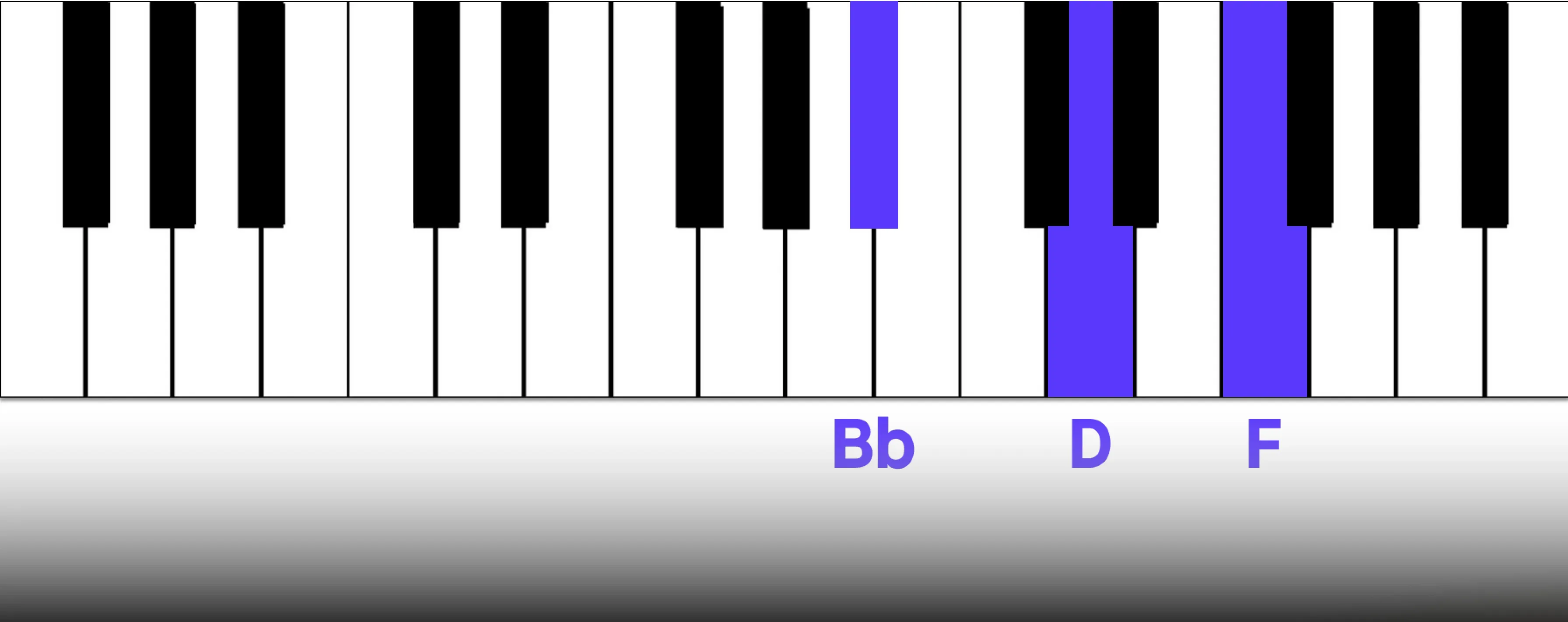
The Bb major chord, the submediant within the D minor tonality, contributes a distinct harmonic color characterized by its contrasting quality. It introduces a major chord within the minor key context, creating a moment of harmonic contrast and reflection.
While not possessing the same degree of functional directionality as the dominant or subdominant chords, the submediant significantly contributes to the overall harmonic depth of the progression.
Its inherent adaptability allows for its use as a passing chord, enriching the harmonic texture, or as a chord that provides a moment of emotional weight before returning to more harmonically stable chords within the key.
Example: The i-iv-VI-v progression in George Michael's “Careless Whisper” is a prime example of how a major chord, in this case the VI, can add significant harmonic color and emotional depth within a minor key setting.
VII: C Major
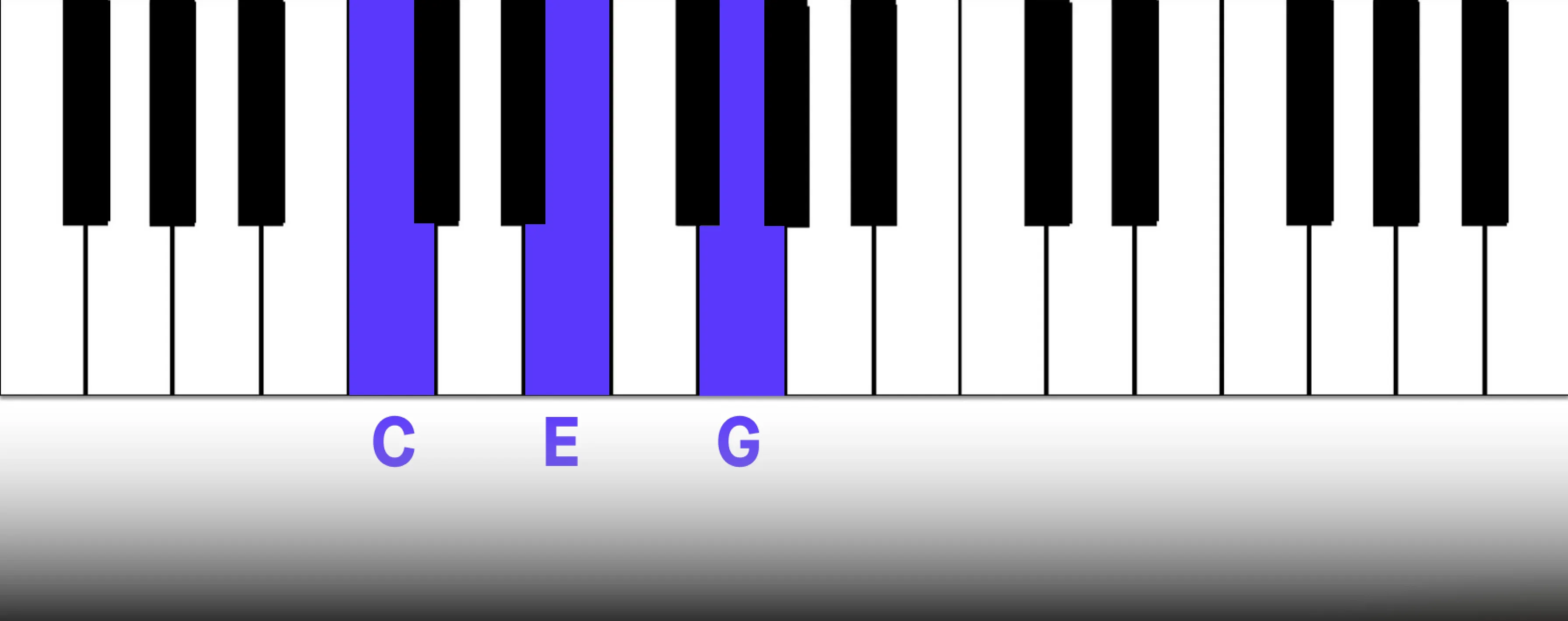
The C major chord, functioning as the VII (subtonic), plays a unique and often dramatic harmonic role, characterized by its inherent instability. It frequently serves as a transitional chord, moving the harmonic progression forward.
This instability arises from its construction and its relationship to the surrounding chords within the key. It rarely functions as a point of harmonic repose or a stable harmonic platform. Instead, it acts as a catalyst, driving the musical narrative towards its resolution.
In essence, the C major chord in D minor serves as a potent harmonic tool, introducing a touch of drama, tension, and directed motion. Its role is not to provide stability, but to generate anticipation and emphasize the resolution to the tonic, thereby contributing significantly to the emotional impact of the music.
Example: Green Day's “21 Guns”, typical of many rock songs, uses the VII chord to conclude its verse progression. This subtonic chord, lacking a strong directional pull, contributes to the progression's inherent flexibility.
“I Want Out” By Helloween also uses this C Major chord, in a D minor key signature, to complete the chord progression in the intro.
These seven diatonic chords provide a solid foundation for building compelling progressions in D minor. To get started on your next song, check out"30 Unique Songwriting Prompts to Craft Your Next Big Hit".
Adding Depth and Complexity to Chords in D Minor
Seventh Chords in D minor
Seventh chords add depth and richness to D minor, creating more complex and emotional sounds. We build them by adding another third above the fifth of a triad. Think of it as stacking four notes instead of three. Here are the main types you'll find in D minor:
- Major 7th: A major triad with a major seventh added. It sounds like a resolution but with a slight, beautiful tension.
- Minor 7th: A minor triad with a minor seventh. It often creates a smooth, reflective, or melancholic feeling.
- Dominant 7th: A major triad with a minor seventh. This chord is full of tension and wants to resolve back to the tonic, driving the music forward. The tritone interval inside is the cause of this tension.
- Half-diminished 7th (m7b5): A diminished triad with a minor seventh. It has a unique mix of tension and ambiguity.
Using seventh chords in your progressions makes them more interesting and emotionally powerful. They bring out richer colors in your music.
For a more detailed guide on Seventh Chords, take a look at our article “A Comprehensive Guide on Creating Seventh Chords in D Minor “.
In the following section, we will explore both the diatonic and chromatic chords within the key of D minor, accompanied by audio examples and notated scores. For those new to musical notation, we highly recommend Music Matters' Grade 1 Music Theory course available on YouTube, which provides an excellent introductory foundation.
The Diminished Chord
Diminished chords have a unique, tense sound. They're built by stacking a minor third and a “diminished fifth” (a fifth that's a half-step smaller than usual) above the root. This diminished fifth creates a tritone, a very dissonant interval, giving the chord its unstable, edgy quality.
That tension makes diminished chords incredibly expressive. They can add suspense, unease, drama, or intensity to your music. Because they feel so unresolved, they create a strong pull toward the next chord, making resolutions feel powerful.
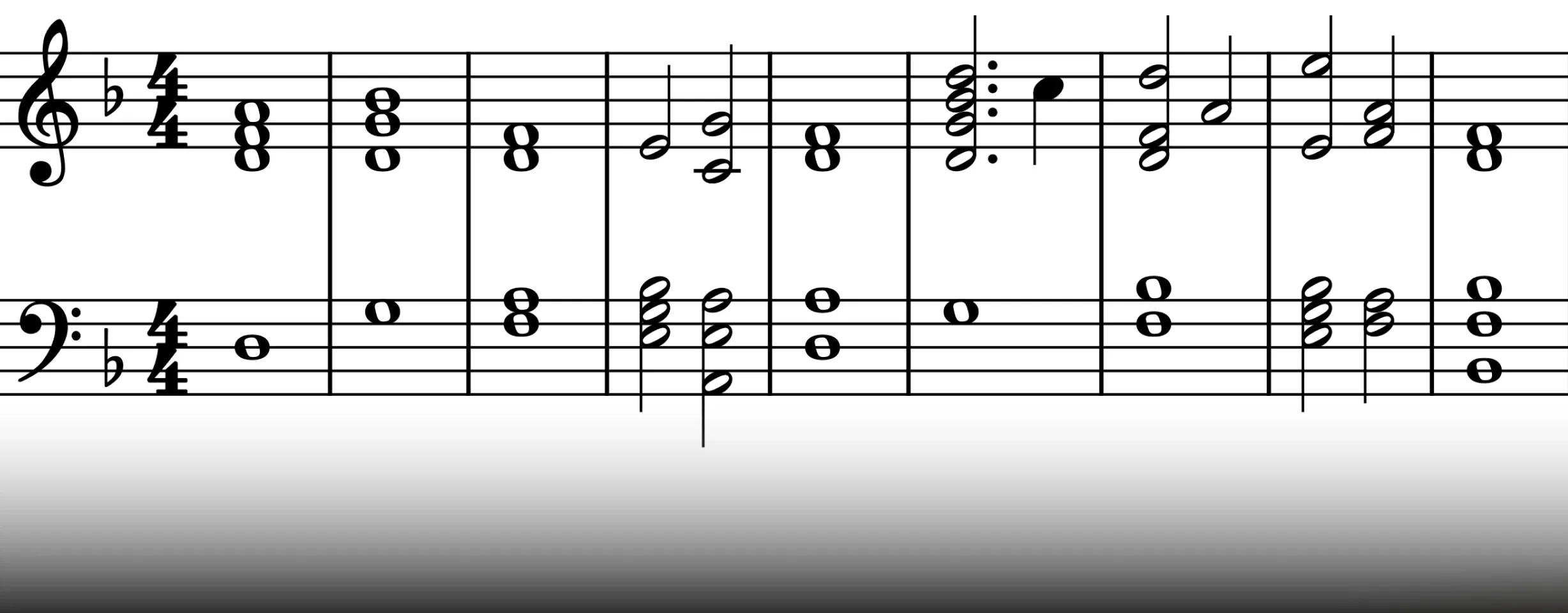
Chords: Dm - Gm - Dm/F - Edim - A7 - Dm - Gm - Bb - Edim - F - Bb
Natural Occurrence Within Minor Scales
In D minor, only one diminished chord occurs naturally within the key's basic chords. To create diminished chords on other notes of the scale, we have to use chromatic notes – notes outside the D minor scale itself. This means we're temporarily stepping outside the key's usual boundaries to get that specific sound.
Functions of Diminished Chords
Diminished chords are a staple in jazz chord progressions, where they're used to create tension and resolution, adding rich colors and complexity. While less common in pop and rock, they still offer powerful expressive potential. Here's how they're used:
- Building Tension: Their dissonant sound, caused by the tritone, creates instability, making the following resolution feel stronger.
- Smooth Transitions: They often act as passing chords, smoothly connecting other chords in a progression.
Beyond these basic uses, diminished chords can add spice to your progressions:
- Diminishing Existing Chords: Turning a regular major or minor chord into a diminished one creates a moment of tension and surprise.
- Chromatic Movement: Using diminished chords to move between two chords chromatically adds interesting harmonic motion.
These techniques allow you to add harmonic depth and intrigue to your music.
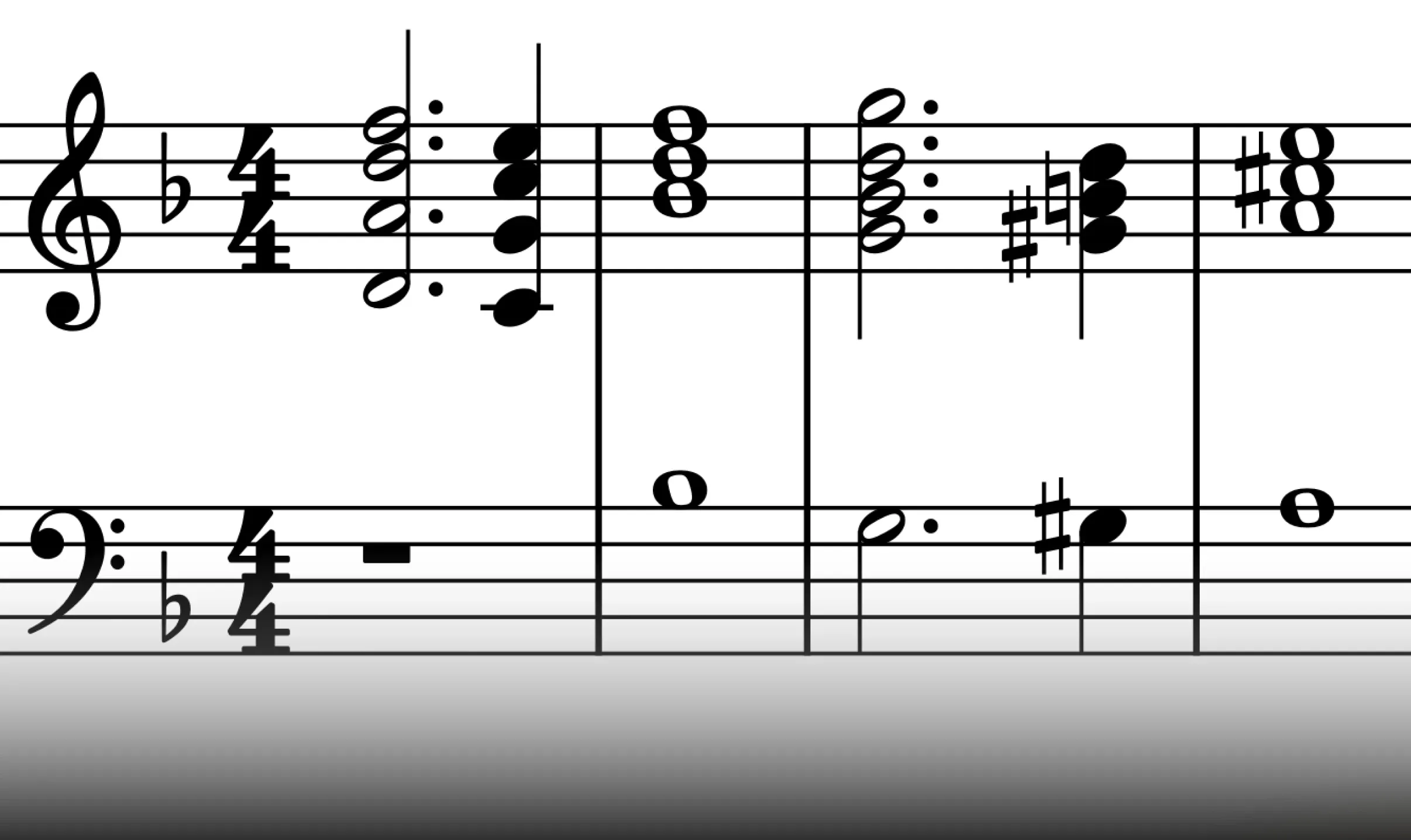
Chords: Dm - C - Bb - Gm - G#dim - A
The Augmented Chord
Augmented chords have a distinct, dissonant sound, built by stacking two major thirds. Because they're not found naturally in D minor, we need to use notes outside the key to create them.
Adding augmented chords, along with other chromatic notes, brings complexity, tension, and movement to your music. They can create surprising shifts and drive the music towards resolution.
Augmented chords offer a wide range of expressive options, from unexpected harmonic turns and smooth key changes (as “pivot chords”) to simply adding color and variety to your sound.
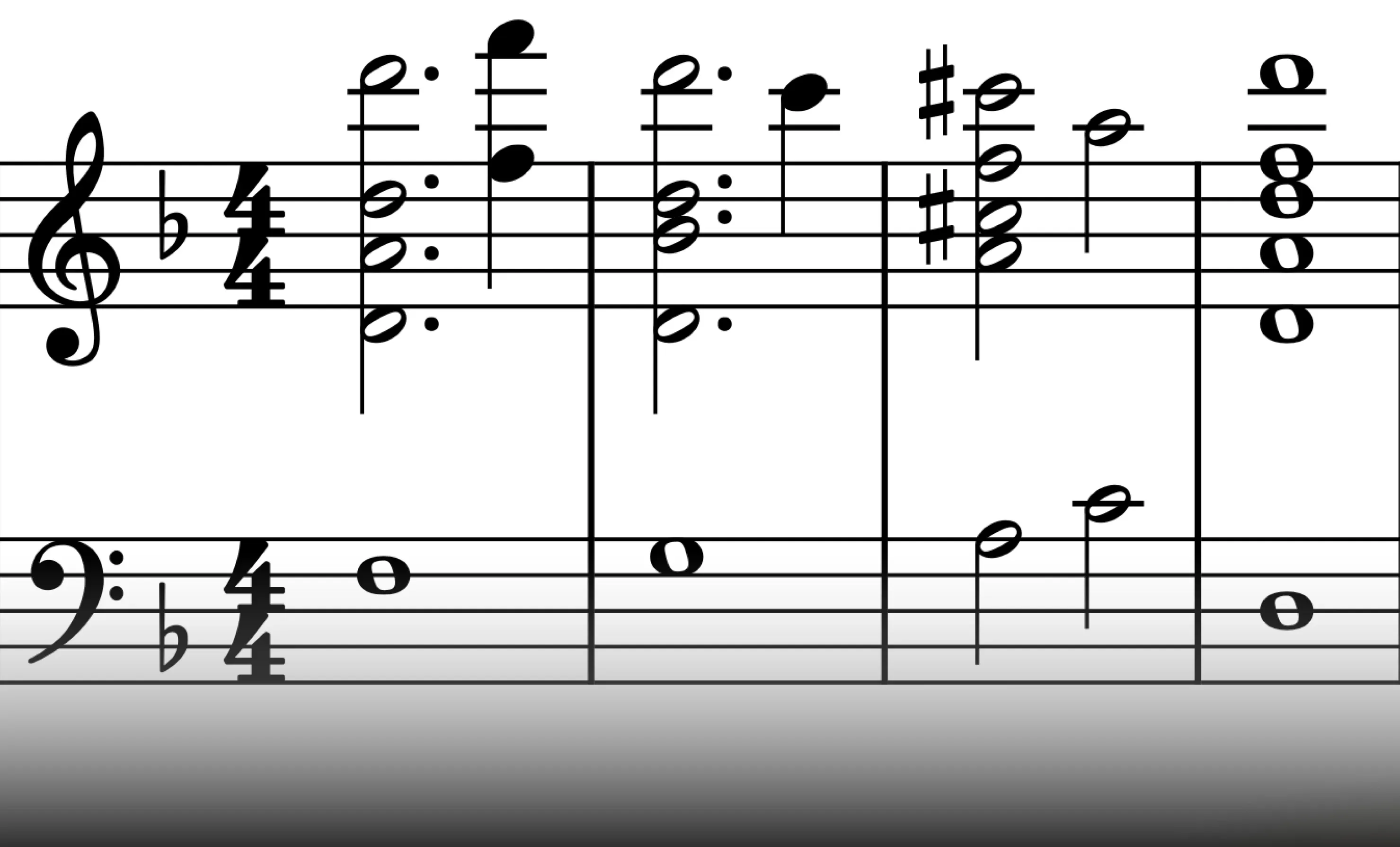
Chords: Dm - Gm - Aaug - Dm
The raised fifth in an augmented chord creates a tense, ambiguous sound, setting it apart from more basic chords. Though not naturally found in standard keys, augmented chords can add dramatic tension and resolution. Here's how:
- Dominant to Tonic: An augmented V chord resolving to i creates a powerful sense of arrival.
- Tonic to Subdominant: An augmented i to iv progression offers an intriguing contrast, where instability resolves to a less final, but interesting, release.
- Line Clichés: Augmented chords in stepwise melodic or bass lines add harmonic tension and depth.
Example of augmented chord within line cliche.
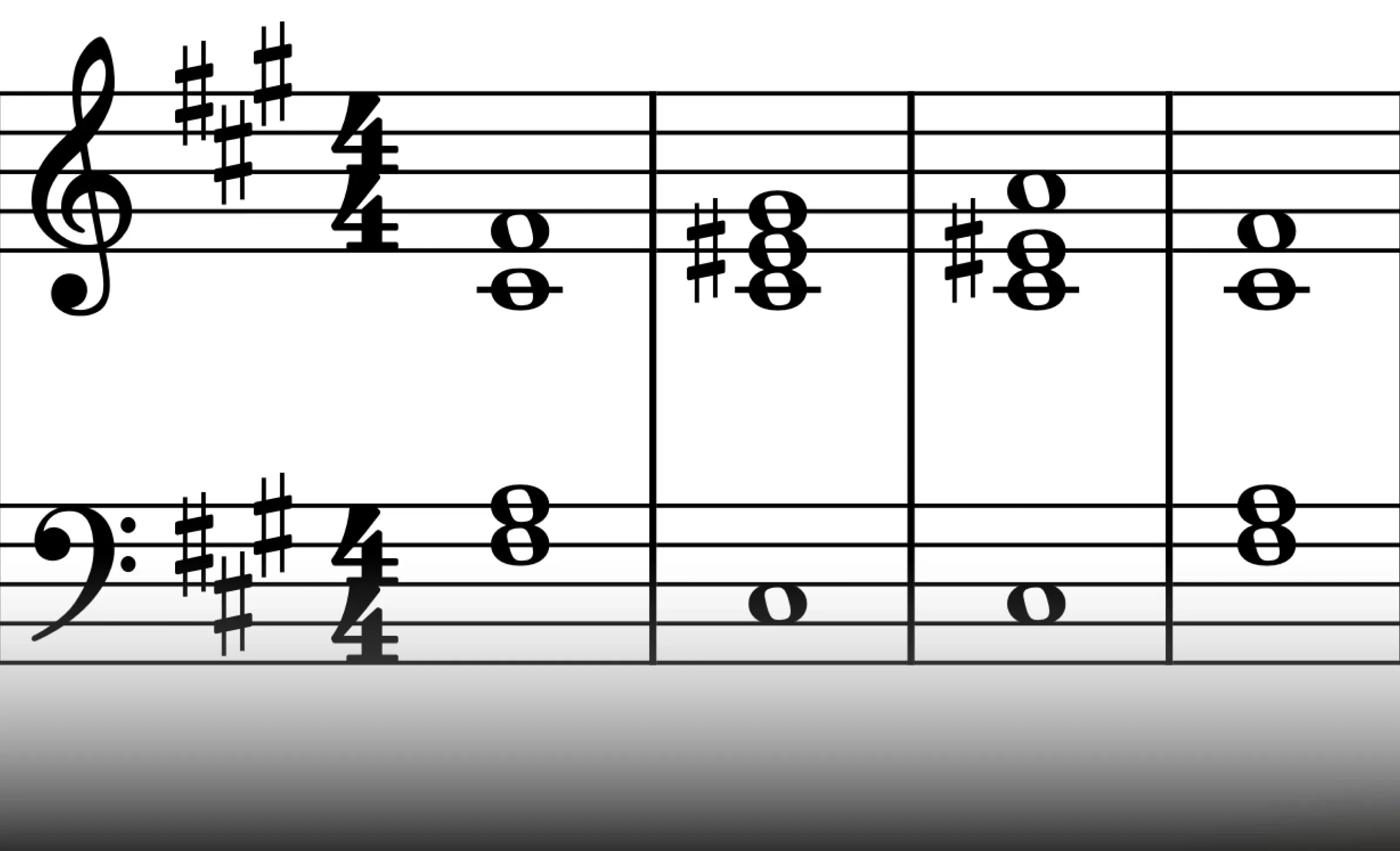
Chords: Dm - C#aug - F - Gm - Eb/G - A7 - Dm
Example of an augmented dominant-tonic interval.
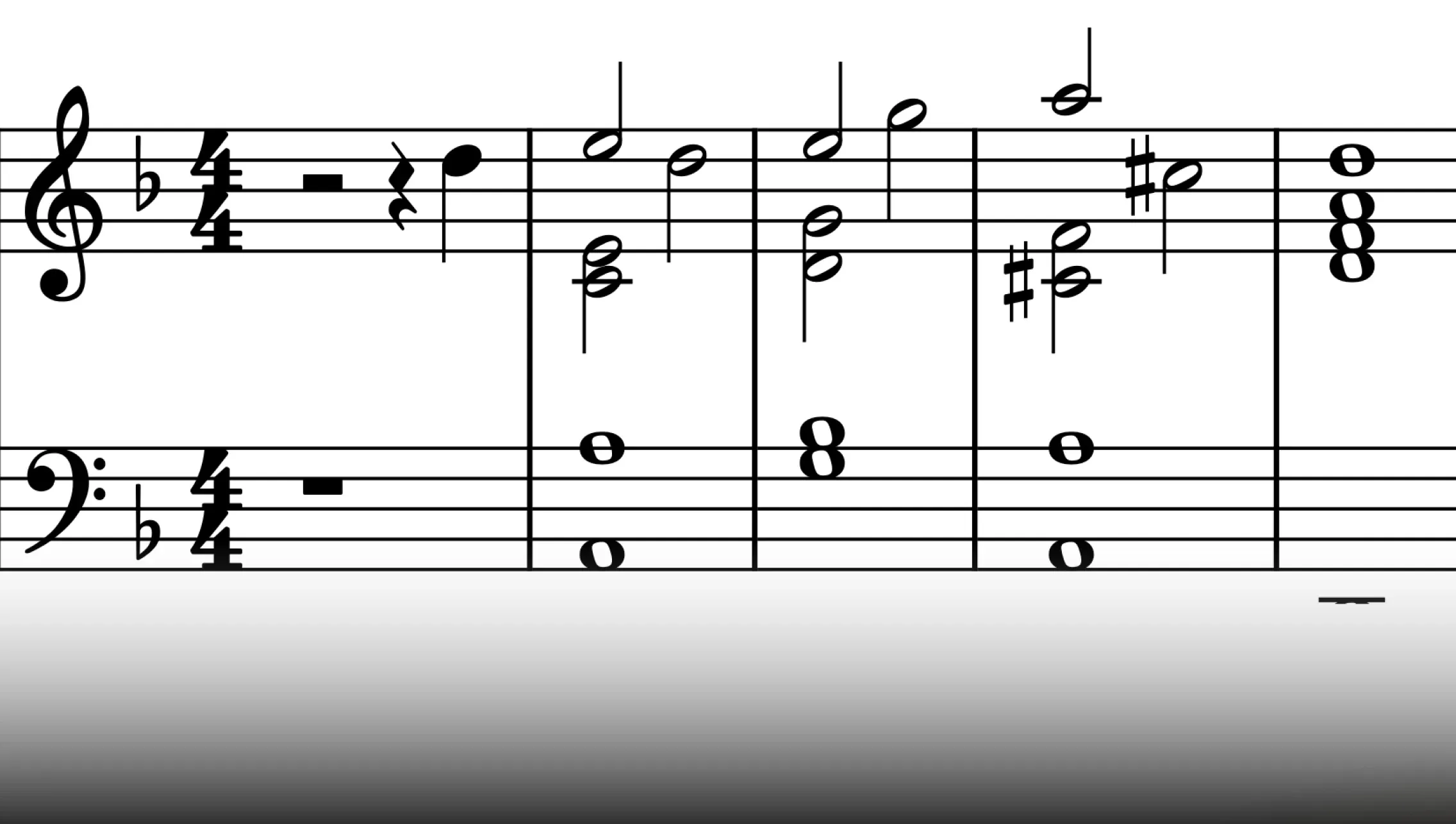
Chords: Am - Gm - Aaug - Dm
Despite their unstable sound, augmented chords serve vital roles:
- Smooth Voice Leading: They connect chords through chromatic or stepwise movement.
- Tension and Release: Their dissonance builds tension, making resolutions more satisfying.
- Key Changes (Modulation): Their ambiguity allows them to act as pivot chords, smoothly transitioning to new keys by sharing notes between them.
Suspended chords: Beyond Major and Minor
Suspended chords, or “sus” chords, create a sense of harmonic ambiguity. They do this by replacing the third of a regular chord with either the second or fourth note of the scale, giving us “sus2” or “sus4” chords.
By removing the third, which defines whether a chord is major or minor, we create a feeling of unresolved tension – a “suspension”. This makes sus chords sound less defined than typical chords, giving them a unique, open sound.
This open sound is incredibly versatile for expressing a range of emotions. Sus chords can create dreamy, ethereal atmospheres, build suspense, or simply add harmonic interest. Their anticipatory quality allows for nuanced emotional expression, expanding your musical palette.
Suspended chords serve key roles:
- Building Anticipation: They naturally create tension and anticipation, perfect for transitions and build-ups.
- Adding Harmonic Color: Their unique structure adds subtle variations and depth, preventing monotony.
- Prolonging Dominant Tension: The Vsus4 chord is great for extending dominant tension, making the V-I resolution more satisfying.

Chords: Dm - A - Gsus4 - Gm - Am - Dm
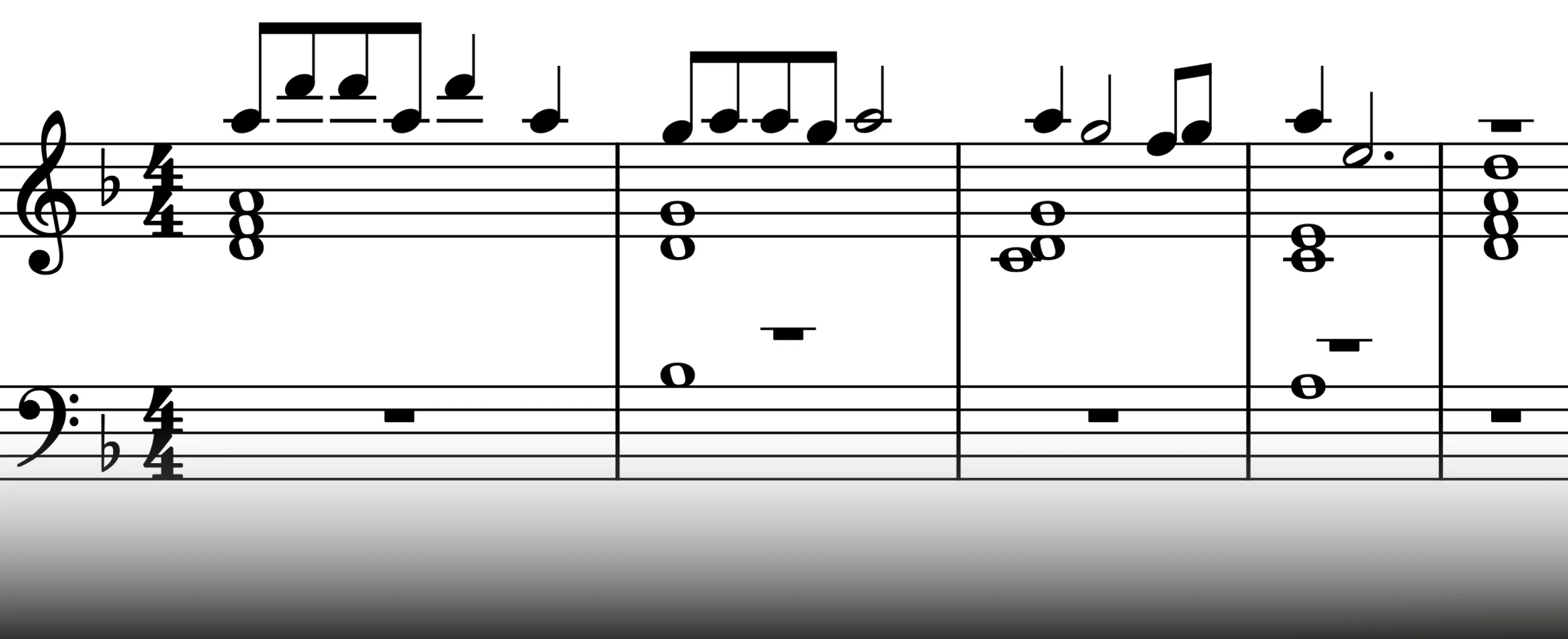
Chords: Dm - Gm -Csus2 - Am - Dm
Suspended chords add unique color and complexity, but their emotional impact depends heavily on context – harmonies, instruments, and tempo. A sus4 in a slow passage might feel yearning, while in a fast one, it builds anticipation.
Sus2 and sus4 differ in resolution: sus4, with its perfect fourth, strongly pulls towards the third, while sus2, with its major second, is less tense and more independent.
Understanding sus chords gives you a powerful toolset, adding depth, color, and intrigue to your music, regardless of genre.
Power Chords
Power chords are the raw backbone of rock, delivering its signature driving energy. These chords, stripped down to their essential components—the root and fifth, often doubled with an octave—produce a punchy, versatile sonic impact that's integral to the genre. This simplified structure creates a powerful, unmistakable sound, vital for building impactful rock progressions.
The lack of a third is crucial for power chords. It creates an unambiguous sound that allows them to function seamlessly within a wide range of melodic and harmonic contexts. This simplicity means they can be used in almost any rock setting, from heavy riffs to driving rhythms.
Furthermore, omitting the third is essential for achieving rock's characteristic distorted guitar sound. Distortion, while adding grit and power, also amplifies any harmonic clashes. By focusing on the root and fifth, power chords avoid unwanted dissonance.
Beyond their sonic benefits, power chords are remarkably guitar-friendly. Their consistent, easily grasped hand shape and fluid movement across the fretboard make them accessible for players of all levels.
Chord Inversions
Chord inversions occur when we shift the bass note of a chord away from its root. This might seem like a small change, but it dramatically alters the chord's character. The bass note has a powerful influence on harmonic stability and how we perceive the overall sound.
Specifically:
- First Inversion: The third of the chord becomes the bass note.
- Second Inversion: The fifth of the chord becomes the bass note.
- Third Inversion: The seventh of the chord becomes the bass note (only for seventh chords).
These inversions can fundamentally reshape the sonic landscape of a chord progression. They enable smoother voice leading, introduce harmonic variety, and add musical interest. Beyond simply changing the sound of individual chords, inversions offer tools for creating more sophisticated and nuanced progressions.
To hear this difference, let's compare two versions of the same progression. The first version uses all root position chords, creating a stable, grounded feel. The second version, however, employs inversions for most chords, except the final A minor. This demonstrates how inversions can create a sense of movement and fluidity, contrasting with the more static feel of root position chords.
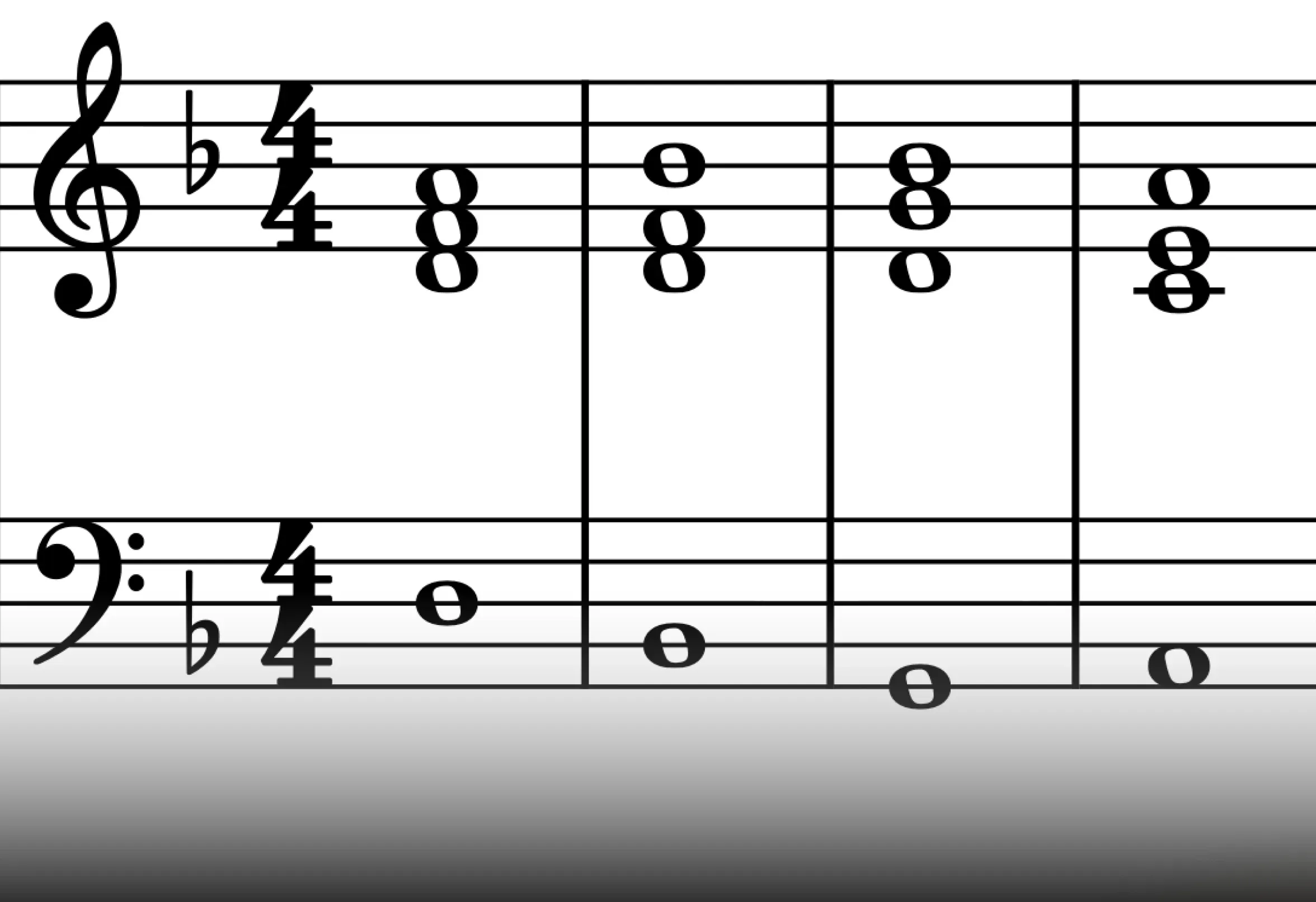
Chords: Dm - Bb - Gm - Am
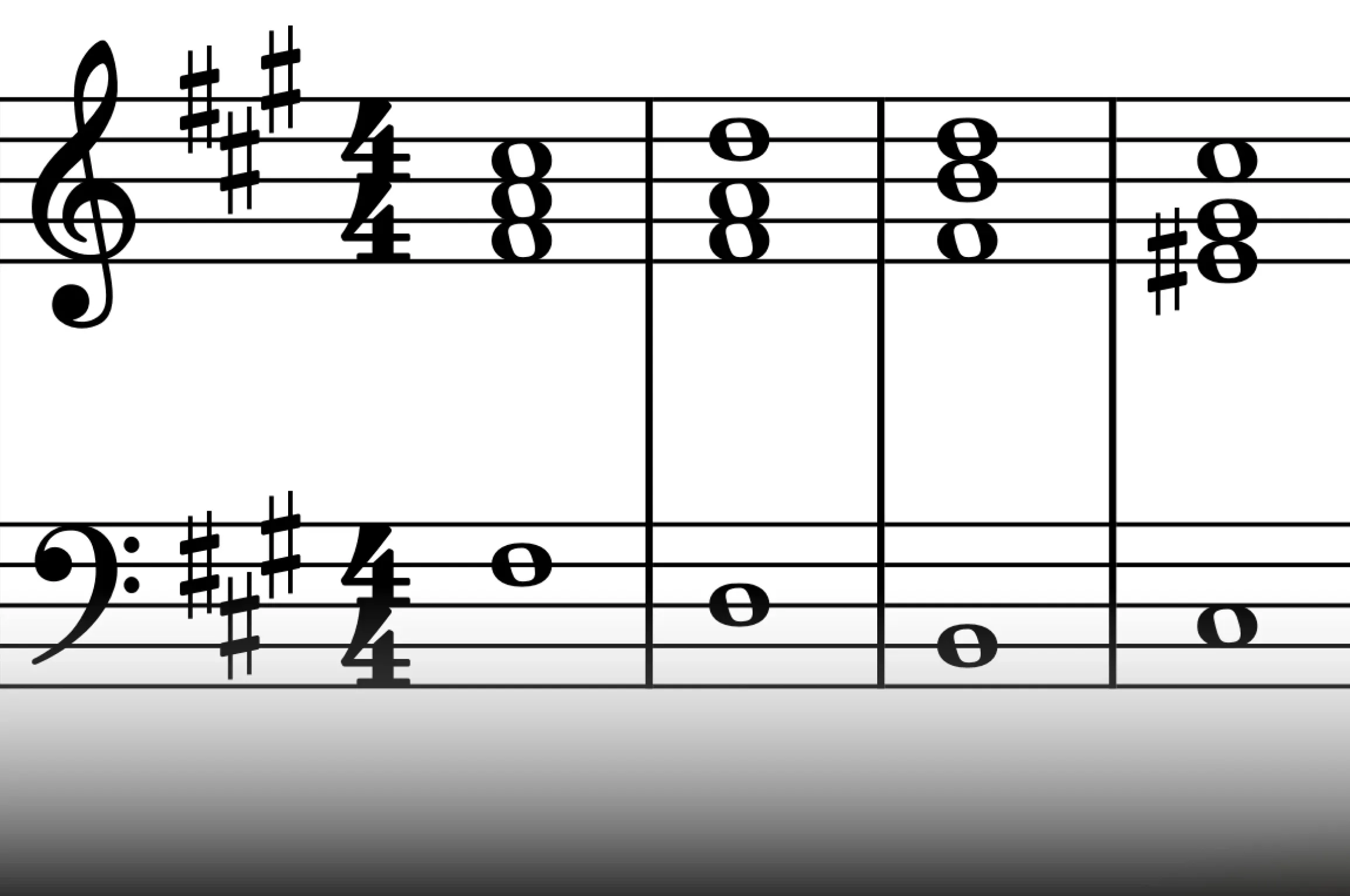
Chords: Dm (1st) - Bb (2nd) - Gm (1st) - Am (R)
Smooth Voice Leading
While the bass note sets the inversion, voicing—how the other notes are arranged—shapes a chord's sound and emotional feel. The spacing between these notes creates its unique color and texture.
Even with a fixed inversion, changing the upper voices alters its sound and resolution. Inversions can play a vital role in creating smooth voice leading, ensuring smooth transitions between chords.
For ensembles, careful voice leading is crucial. Minimizing large leaps and avoiding clashes achieves a cohesive sound.
Stability and Sound
Chord inversions subtly alter a chord's stability and sonic character by modifying the intervallic relationships between the bass note and the remaining chord tones. This technique introduces expressive depth and harmonic variety without introducing undue dissonance.
Root position chords, with the root in the bass, project a sense of grounded stability. Inverted chords, by contrast, having a non-root bass note, can create a feeling of harmonic motion or a less resolved quality, offering harmonic variety without introducing harshness.
Experimenting with tonic chord inversions provides a valuable means of adding subtle nuances of stability and reinforcing the sense of “home” within a musical composition. Different inversions possess varying degrees of stability, allowing for precise control over the perceived level of resolution.
Initiating or concluding musical phrases with inversions can lend a sense of polish and prevent the music from sounding overly static, thereby enhancing the overall harmonic flow.
For instance, one might begin a progression with a root position tonic chord to establish a grounded feel, subsequently employing inversions to modulate the perceived stability while maintaining the chord's fundamental tonality.
This approach introduces harmonic interest while reinforcing the key signature. Inversions contribute significant subtle detail and richness to musical textures. They expand bass line possibilities and provide diverse voicing options, resulting in more engaging and aurally stimulating musical experiences.
Learn How to Recognize Intervals
The ability to instantly recognize intervals is crucial for confident work with triads, inversions, and altered chords such as diminished, augmented, and suspended chords. This skill streamlines the songwriting process, enabling deliberate harmonic choices and minimizing guesswork when selecting chords or melodic pitches.
For instance, hearing a melody ascend by a perfect fourth, immediate interval recognition allows for the identification of potential chord tones or the construction of appropriate harmonies. Training one's ear to distinguish intervals provides a significant degree of control over musical expression, leading to more efficient composition, informed harmonic decisions, and ultimately, more effective communication of musical ideas.
For practical exercises, we recommend our article “Ear Training: Songs to Practice Intervals” which provides a curated list of musical examples for practicing interval recognition in both ascending and descending directions, facilitating the development of this essential aural skill.
How to Write Chord Progressions in D minor?
Having established a foundational understanding of the chords within the key of D minor, it is now time to apply this knowledge in a practical context. We recommend checking out our comprehensive guide “Mastering Chord Progressions in D Minor: A Complete Guide”.
This resource explores the application of D minor chords in popular music through the analysis of well-known examples and provides a toolkit of harmonic techniques designed to elevate your songwriting. You will learn to effectively employ both diatonic and non-diatonic chords, drawing inspiration from successful songs and their chord progressions.
Furthermore, you will discover how to introduce harmonic color and intrigue through techniques such as tonic substitutions, secondary dominants, chromatic mediants, and other methods for creating compelling chordal shifts. We will also address the concept of modulation, or key change, to empower you to guide your listeners on engaging musical journeys.
Musiversal: Facilitating Real-Time Collaboration with Professional Musicians
Elevate your musical productions through collaborative recording sessions with professional artists. With the Musiversal Unlimited subscription, you gain access to a limitless creative environment, featuring unlimited recording sessions and a network of over 80 professional musicians, songwriters, and engineers.
Transform Your Musical Concepts into Reality Engage session musicians to realize the full potential of your musical compositions. By participating in live sessions via a dedicated link, you can collaborate with session drummers, string players, beat makers, bassists, guitarists, vocalists, and more, ensuring your artistic vision is faithfully executed. Schedule sessions at your convenience, join live and experience the dynamic process of bringing your music to life.
Comprehensive Songwriting Support
Whether you have only the seed of an idea or a fully developed concept, Musiversal offers dedicated songwriting sessions. Our experienced songwriters will assist you with melodic development, harmony, lyric composition, and all other aspects of the songwriting process.
Professional Post-Production and Marketing
To ensure your music is release-ready, our award-winning engineers provide expert mixing and mastering services. Furthermore, our marketing specialists offer dedicated sessions to develop a comprehensive launch strategy, ensuring your music reaches its intended audience.
Musiversal Blog: A Comprehensive Music Resource
The Musiversal blog is updated weekly, providing expert insights on a wide range of topics, including music theory, songwriting, production techniques, equipment, and music marketing.
Your Music, No Limits.
Join the Waitlist